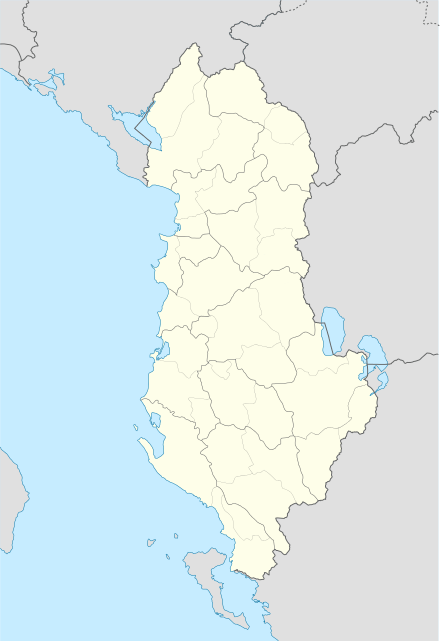Koshovicë
Koshovicë (Greek: Κοσοβίτσα/Κοσσοβίτσα; romanized: Kosovítsa/Kossovítsa) is a village in Gjirokastër County, southern Albania.[1] At the 2015 local government reform it became part of the municipality of Dropull.[2] It is inhabited solely by Greeks.[3]
Koshovicë Kosovitsa, Kossovitsa | |
|---|---|
Settlement | |
 Koshovicë | |
| Coordinates: 39°49′05″N 20°24′27″E | |
| Country | |
| County | Gjirokastër |
| Municipality | Dropull |
| Elevation | 650 m (2,130 ft) |
| Time zone | UTC+1 (CET) |
| • Summer (DST) | UTC+2 (CEST) |
| Vehicle registration | GJ |
St. Mary's Monastery Church, located within the village, is a Religious Cultural Monument of Albania.[4]
Demographics
According to Ottoman statistics, the village had 188 inhabitants in 1895.[5] The village had 864 inhabitants in 1993, all ethnically Greeks.[3] The village today has a permanent population of roughly 350-400 inhabitants, notably due to migration to Greece or other countries. Despite this, the population doubles in Easter, Summer and Christmas, as most people return to their village to celebrate or have holidays with their families.
Notable individuals
- Kosmas Thesprotos (c. 1780-1852), Greek scholar, priest and theologian.
References
- "Location of Koshovicë".
- "Law nr. 115/2014" (PDF). Archived from the original (PDF) on 2015-09-24. Retrieved 2019-07-26.
- Kallivretakis, Leonidas (1995). "Η Ελληνική Κοινότητα της Αλβανίας υπό το Πρίσμα της Ιστορικής Γεωγραφίας και Δημογραφίας [The Greek Community of Albania in Terms of Historical Geography and Demography]" (in Greek). Εκδόσεις Σιδέρης. p. 58. Retrieved 2 February 2015.
- "Religious buildings with the "Culture Monument" status". Republic of Albania National Committee for Cult. Archived from the original on July 6, 2011. Retrieved October 28, 2010.
- Μιχάλης Κοκολάκης, "Η τουρκική στατιστική της Ηπείρου στο Σαλναμέ του 1895" στο Βασίλης Παναγιωτόπουλος, Λεωνίδας Καλλιβρετάκης, Δημήτρης Δημητρόπουλος, Μιχάλης Κοκολάκης και Ευδοκία Ολυμπίτου (επιμ.), Πληθυσμοί και οικισμοί του ελληνικού χώρου. Ιστορικά μελετήματα, Ινστιτούτο Νεοελληνικών Ερευνών/Εθνικό Ίδρυμα Ερευνών, Athens 2003, p. 311
